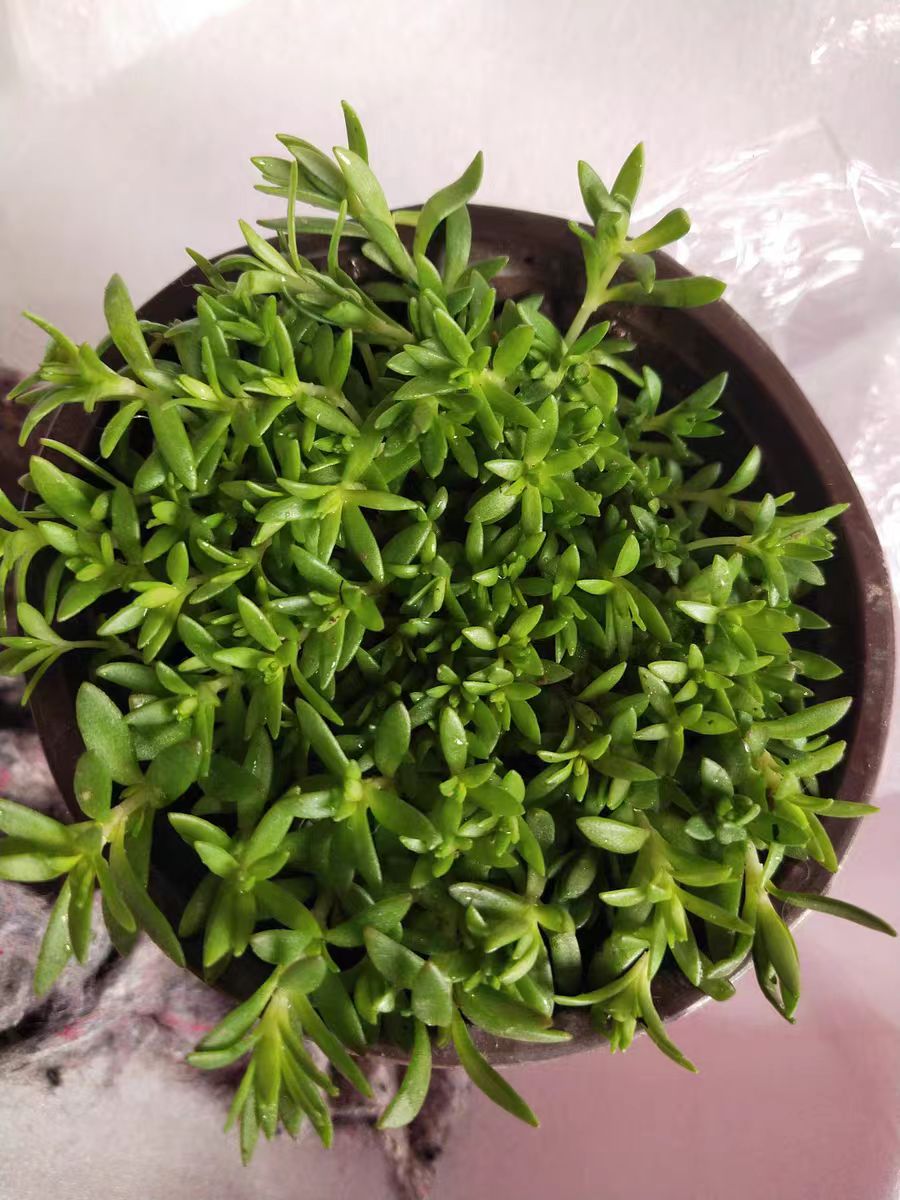Creeping stonecrop (Sedum sarmentosum) is a succulent herb with fleshy leaves. Not only is it visually appealing, but its entire plant can be used for medicinal purposes, with properties of clearing heat and detoxifying, reducing swelling, and promoting diuresis. Many gardening enthusiasts want to propagate creeping stonecrop themselves, and cuttage is a simple and effective method. Today, we’ll detail the specific steps, especially the tips to help it root quickly.
Why Choose Cuttage Propagation? When Is the Best Time?
Creeping stonecrop can be propagated by seeds, division, and cuttings. However, cuttage offers numerous advantages: its stems easily produce new roots, with a high survival rate under suitable conditions. Unlike seed propagation, it avoids long waiting times, allowing faster growth of mature plants while preserving the mother plant’s desirable traits without worrying about varietal changes.
The optimal time for cuttage is during warm weather, such as late spring to early summer or autumn. These seasons feature moderate temperatures, small day-night temperature differences, and suitable air humidity, making it easier for cuttings to root and sprout new leaves. Summer’s heat can cause cuttings to rot, while winter’s cold hinders rooting, so these periods are not suitable for cuttage.
What to Prepare Before Cuttage?
How to Select and Treat Cuttings
Choose healthy mother plants: Cut semi-lignified stems from the current year. The stems need not be too long— (leave a few leaves)—as excessive foliage consumes more water. Ensure the stems have several plump nodes, as these are where roots will emerge.
Cutting technique: Make a slanted cut at the lower end to increase the water absorption area. After cutting, air-dry the stems in a cool, ventilated place until the cut surface is dry to prevent bacterial infection. For faster rooting, soak the lower end of the stems in a rooting hormone solution (such as common naphthalene acetic acid or indolebutyric acid) for a period.
How to Prepare Suitable Substrate
Creeping stonecrop is not strict about soil, but loose, breathable, and well-draining substrates are more conducive to rooting. Here are recommended mixtures:
River sand + garden soil: River sand enhances air permeability and drainage, while garden soil provides some nutrients.
Peat moss + perlite + vermiculite: Suitable for cases requiring higher substrate quality.
Alternative: If professional substrates are unavailable, mix garden soil with river sand or cinder to improve looseness.
Tip: Sterilize the substrate before use by sun (sun ) for several days or treating it with carbendazim solution.
How to Choose Containers
Cuttage containers can be small flower pots, seedling trays, or cell trays, but ensure they have drainage holes to prevent waterlogging and root rot. Flower pots are suitable for small-scale propagation (insert several cuttings per pot), while seedling trays or cell trays are ideal for large-scale cuttage, facilitating management and transplantation.
How to Perform the Cuttage
Fill and moisten the substrate: Place the prepared substrate into the container and gently press it flat. Water the substrate thoroughly, allowing it to absorb moisture fully and drain excess water to maintain a moist (not waterlogged) state.
Insert the cuttings: Insert the treated cuttings into the substrate to a depth of about half their length. To avoid damaging the cut surface, pre-poke holes with a finger or chopstick first. Leave space between cuttings to prevent leaves from overlapping.
Secure and cover: Gently press the surrounding substrate to ensure the cuttings are firmly anchored and prevent lodging. Cover the container with a transparent plastic film or glass with small holes to maintain humidity while allowing ventilation.
Transplanting When Ready
Transplant when the cuttings develop sufficiently long roots and new leaves are visibly growing. Use fertile, loose garden soil or flower potting soil mixed with decomposed organic fertilizer or slow-release fertilizer. Choose a container slightly larger than the cuttage vessel.
Transplant steps: Gently remove the plant, preserving the roots. Add drainage material to the new pot’s bottom, fill with substrate, water thoroughly after planting, and place it in a location with diffused light for several days of seedling recovery before moving to a sunny spot.
Post-transplant care: Keep the soil moist, apply a thin layer of compound fertilizer monthly during the growing season, and trim the plant timely to encourage branching and a fuller shape, as creeping stonecrop has strong (creeping growth ability).
Follow these methods to successfully propagate healthy creeping stonecrop. Watching it grow allows both ornamental enjoyment and medicinal use—give it a try!
How to Propagate Succulent Creeping Stonecrop by Cuttings?

Share with
Tagged in :




Leave a Reply